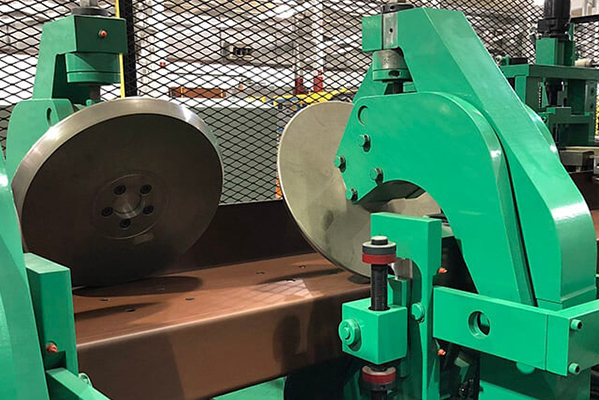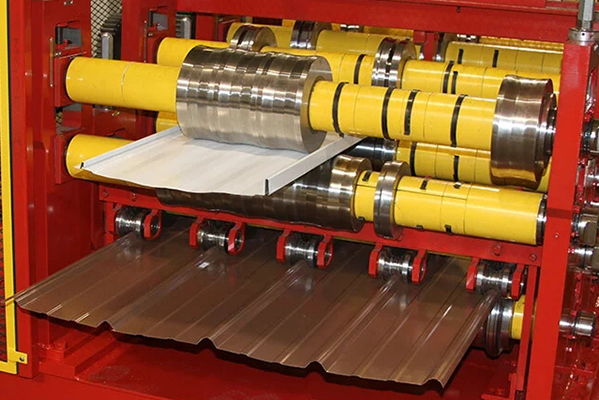Navigation Menu
Contact Us
- Email:
- info@wxavatar.com
- Address:
- Yurong Village, Yuqi Street, Huishan District, Wuxi, China.
Release Date:Mar 28, 2025 Visit:55 Source:Roll Forming Machine Factory
While portable roll forming machines offer significant advantages for on-site metal fabrication, they also come with several drawbacks that potential users should carefully evaluate.
Understanding these limitations helps businesses make informed decisions about whether portable roll forming is the right solution for their specific needs. This article examines the key disadvantages of portable roll forming machines compared to their stationary counterparts.
1. Limited Production Capacity
Lower Output Speed
• Typically slower than industrial stationary roll formers
• Manual feeding and cutting processes reduce throughput
• Not suitable for high-volume mass production
Restricted Material Thickness
• Most portable models handle only light-gauge metals (0.3mm-1.5mm)
• Cannot process heavy structural steel sections
• Limited ability to form high-strength alloys
2. Profile Design Limitations
Simpler Profile Configurations
• Fewer roll stations than industrial machines (usually 6-12 vs. 20+)
• Limited to basic profiles (C-channels, simple corrugations)
• Cannot produce complex multi-curve architectural shapes
Reduced Precision in Forming
• More variation in profile consistency
• Less control over critical dimensions
• Higher tolerance margins than factory production

3. Operational Challenges
Frequent Setup Requirements
• Time-consuming roller changes between profiles
• Requires skilled adjustment for proper alignment
• Production delays when switching specifications Maintenance Demands
• Higher wear on components due to mobile use
• More frequent lubrication needs
• Vulnerable to dirt/debris in field conditions
4. Physical Constraints
Space and Stability Issues
• Requires level, stable work surface not always available onsite
• Limited coil capacity (typically ≤1 ton vs. 5-10 tons for stationary)
• Difficult to operate in confined spaces
Power Supply Limitations
• Often dependent on generators with inconsistent power
• Electrical models limited by site voltage availability
• Hydraulic versions require additional equipment
5. Economic Considerations
Higher Per-Unit Costs
• Slower production increases labor costs per unit
• More material waste during setup and trial runs
• Less efficient for large-quantity orders Equipment Investment
• High-quality portable formers represent significant capital outlay
• May require additional support equipment (uncoilers, straighteners)
• Limited resale market for used machines
6. Quality Control Issues
Surface Imperfections
• More prone to scratches and surface defects
• Difficult to maintain coating integrity in field conditions
• Increased risk of oil contamination
Dimensional Variability
• Temperature changes affect material properties outdoors
• Vibration during transport can misalign rollers
• Harder to maintain tight tolerances consistently

7. Safety and Regulatory Concerns
Increased Safety Risks
• More exposure to weather elements during operation
• Higher noise levels in uncontrolled environments
• Greater risk of accidents with frequent machine moves
Certification Challenges
• Some portable-formed products may not meet strict building codes
• Difficult to implement full QA processes onsite
• Limited traceability of production conditions
Mitigation Strategies
While these disadvantages exist, many can be addressed through:
✔ Careful machine selection for intended applications
✔ Operator training and certification programs
✔ Regular maintenance schedules
✔ Complementary stationary production for complex/high-volume work
✔ Investment in higher-end portable models with better features
Conclusion Portable roll forming machines provide invaluable flexibility for on-site metal fabrication, but their limitations in production capacity, profile complexity, operational efficiency, and quality control make them unsuitable for many applications. Businesses must carefully weigh these disadvantages against the machines' mobility benefits when making purchasing decisions.
For projects requiring high volumes, complex shapes, or strict quality standards, stationary industrial roll formers often remain the superior choice. However, when used appropriately for their intended purposes - small-to-medium batches of simple profiles in field conditions - portable roll formers continue to serve as practical solutions despite their inherent limitations.
Understanding these drawbacks enables users to set realistic expectations and implement strategies to maximize the value of their portable roll forming equipment while minimizing its shortcomings.